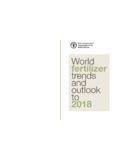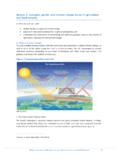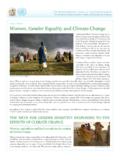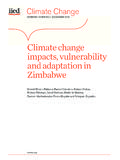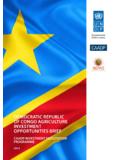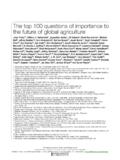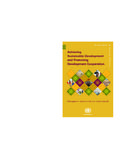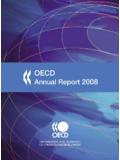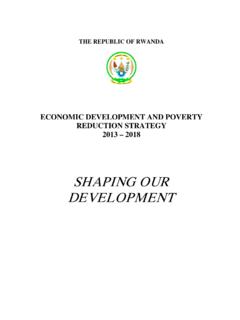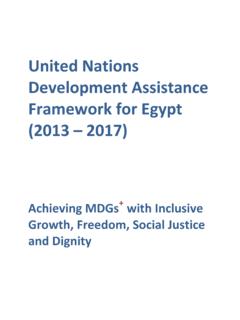Transcription of Climate-Smart Agriculture Sourcebook - Home | …
1 climate -SmartAgricultureSourcebookSummar ySecond edition FAO/Olivier AsselinClimate- smart Agriculture Sourcebook Summary Second EditionFood and Agriculture Organization of the United NationsRome, 2017 The designations employed and the presentation of material in this information product do not imply the expression of any opinion whatsoever on the part of the food and Agriculture Organization of the United Nations (FAO) concerning the legal or development status of any country, territory, city or area or of its authorities, or concerning the delimitation of its frontiers or boundaries. The mention of specific companies or products of manufacturers, whether or not these have been patented, does not imply that these have been endorsed or recommended by FAO in preference to others of a similar nature that are not 978-92-5-109988-9 The views expressed in this information product are those of the author(s) and do not necessarily reflect the views or policies of FAO.
2 FAO, 2017 FAO encourages the use, reproduction and dissemination of material in this information product. Except where otherwise indicated, material may be copied, downloaded and printed for private study, research and teaching purposes, or for use in non-commercial products or services, provided that appropriate acknowledgement of FAO as the source and copyright holder is given and that FAO s endorsement of users views, products or services is not implied in any requests for translation and adaptation rights, and for resale and other commercial use rights should be made via or addressed to information products are available on the FAO website ( ) and can be purchased through ivSection A Concept viIntroduction 1 climate change adaptation & mitigation 2 Managing landscapes for CSA systems 3 Section B Agricultural production and natural resources use 4 Climate-Smart crop production 7 Climate-Smart livestock production 9 Climate-Smart forestry 11 Climate-Smart fisheries &
3 Aquaculture 13 Integrated production systems 15 Water management 17 Sustainable soil & land management 19 Genetic resources for food & Agriculture 21 Energy management 23 Developing sustainable food systems & value chains 25 Section C Enabling environment 26 Enhancing capacities for a country-owned transition towards CSA 29 Supporting rural producers with knowledge 31 Enabling policy environment 33 Investing in CSA 35 climate resilience: Synergies between disaster risk reduction & CSA 37 The role of gender 39 Social protection & decent rural employment 41 climate impact assessments & appraisals of options 43 Programme and project monitoring & evaluation 45 The theory of change for the CSA approach: A guide to evidence-based implementationat the country level 47 Significant developmentsThis booklet presents a summary of the contents of the second edition of the Climate-Smart Agriculture Sourcebook .
4 The landscape of international climate action has changed considerably since FAO introduced the concept of Climate-Smart Agriculture (CSA) at the Hague Conference on Agriculture , food Security and climate Change in 2010, and followed up with the publication of the first edition of the CSA Sourcebook in 2013. Most importantly, in 2015 the international community adopted the 2030 Agenda for Sustainable Development, which encompasses the Paris Agreement on climate Change, the Sustainable Development Goals (SDGs) and the Addis Ababa Action Agenda, and provides an unprecedented international framework for increasing the effectiveness of national actions and collective international efforts to achieve sustainable order to implement the 2030 Agenda, FAO member states have endorsed five principles of sustainable food and Agriculture .
5 FAO understands Agriculture to comprise crop and livestock production, fisheries and aquaculture and forestry. Balancing social, economic and environmental considerations, the five principles provide a framework for policy dialogue and for developing appropriate policies, strategies, regulations and incentives. These principles state that: 9 Improving efficiency in the use of resources is crucial to sustainable Agriculture ; 9 Sustainability requires direct action to conserve, protect and enhance natural resources; 9 Agriculture that fails to protect and improve rural livelihoods, equity and social well-being is unsustainable; 9 Enhanced resilience of people, communities and ecosystems is key to sustainable Agriculture .
6 9 Sustainable food and Agriculture requires responsible and effective governance address the specific challenges climate change poses to sustainable food and Agriculture , FAO promotes CSA as an approach that can transform and reorient agricultural systems to effectively support development and ensure food security in a changing climate . In this new international landscape, the three interlinked objectives of CSA are more relevant than ever. These objectives are: 9 Sustainably increasing agricultural productivity and incomes; 9 Adapting and building resilience to climate change; 9 Reducing and/or removing greenhouse gas emissions, where integrates the promotion of sustainable Agriculture into its overarching goal to end hunger, achieve food security and improve nutrition by 2030.
7 This is a clear recognition that the world s agricultural ecosystems will not be able to deliver the 50 percent increase in demand for food and other agricultural products by 2050, if current unsustainable natural resource management practices are maintained. The impacts of climate change on Agriculture undermine the food security and livelihoods of the world s most vulnerable people and threaten Earth s ecosystems. Action on closely related objectives, such as clean water and sanitation (SDG6), sustainable consumption and production (SDG12), life below water (SDG14) and life on land (SDG15) must be mobilized in tandem, to meet SDG13 s targets on combatting climate change and its impacts.
8 OVERVIEWINTRODUCTION vAdopting the CSA approachMany countries have embraced the concept of CSA. This was evidenced in a FAO study issued in 2016, showing that 32 of the 189 countries that had submitted Intended Nationally Determined Contributions for the Paris Agreement specifically referenced CSA. Approximately 50 countries endorse, or even prioritize, actions intended to harness the potential synergies between mitigation and adaptation in Agriculture . Through research and activities supported by FAO and many other groups, the knowledge base underpinning CSA has also grown significantly. The insights gained in recent years, the success stories and the experiences that have created a better understanding of potential accelerators and barriers to the adoption of CSA practices, are all essential for preparing the ground for the further expansion of CSA at all levels.
9 These insights need to be made available in a timely and accessible manner to support ongoing efforts to promote digitalTo do this, the CSA Sourcebook is being transformed into a living , digital resource. The digital CSA Sourcebook draws together a wide range of knowledge and expertise into a more interactive and easy-to-navigate platform. In this format, the CSA Sourcebook will be able to guide policy makers, programme managers, sectoral experts, academics, extension agents, and development practitioners in their efforts to make all the agricultural sectors more Climate-Smart . By launching the fully revised second edition of the CSA Sourcebook online, it will be possible to update individual modules or case studies when needed.
10 This will allow the information available on CSA to be shared in pace with this rapidly evolving contentThe revised digital CSA Sourcebook contains updated versions of the original 18 modules and includes five new modules: 9 climate change, adaptation & mitigation; 9 Integrated production systems; 9 Supporting rural producers with knowledge; 9 The role of gender; 9A guide to evidence-based implementation at the country first section of the CSA Sourcebook provides a comprehensive introduction to the CSA concept, defining what CSA is and what it is not. It looks at what the application of the CSA approach entails, and identifies key areas of intervention. It also outlines how CSA can support countries to build their resilience to the impacts of climate change while increasing the sustainability and productivity of their food systems.




